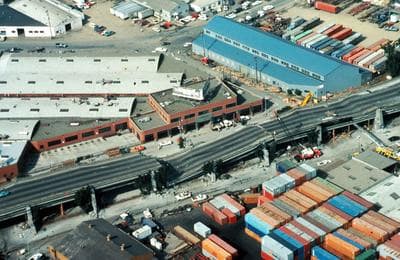Advertisement
California To Create Earthquake Early Alert System

California governor Jerry Brown has signed into law the creation of a statewide earthquake early warning system.
Tom Heaton, director of the Earthquake Engineering Research Laboratory at Caltech, told Here & Now that a early alert system is a network of hundreds of seismometers that transmit data to one another and quickly analyze it to estimate the strength of the resulting shock waves.
"We cannot predict for people right at the epicenter that it's about to shake," Heaton said. "But for people who are not at the epicenter ... we can tell other people the waves are on the way to them and how strong they'll be when they get to them."
Heaton said the 60 seconds forewarning would help people get into more protected areas. In Japan, where such a system already exists, it's linked to their schools, trains and elevators. So if an alert goes out, trains will begin to slow and elevators "go to the closest floor and open."
"If you are dealing with earthquakes you want any kind of tool you can get to help protect yourself," Heaton said.
The United States has lagged behind other countries in implementing such a system, according to Heaton.
"Americans tend to think of earthquakes as a California problem," he said. "It's hard to get traction nationally."
Guest
- Thomas Heaton, director of the Earthquake Engineering Research Laboratory at Caltech.
This segment aired on September 25, 2013.